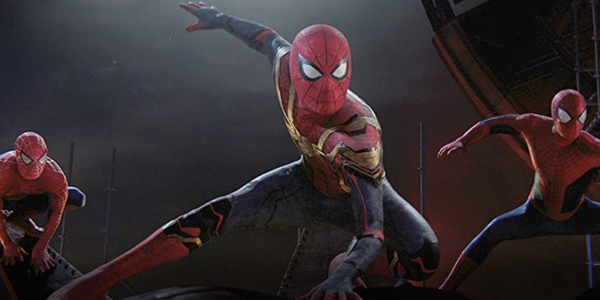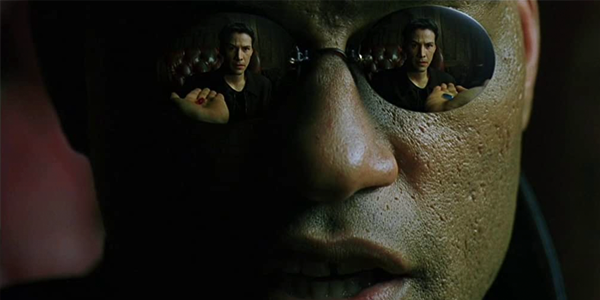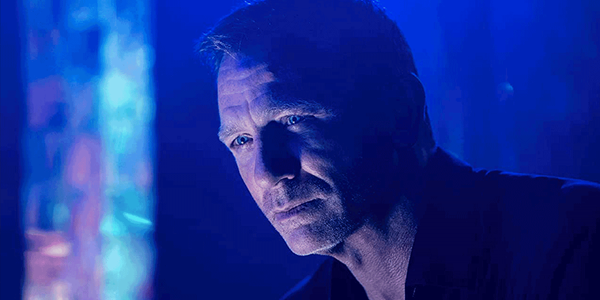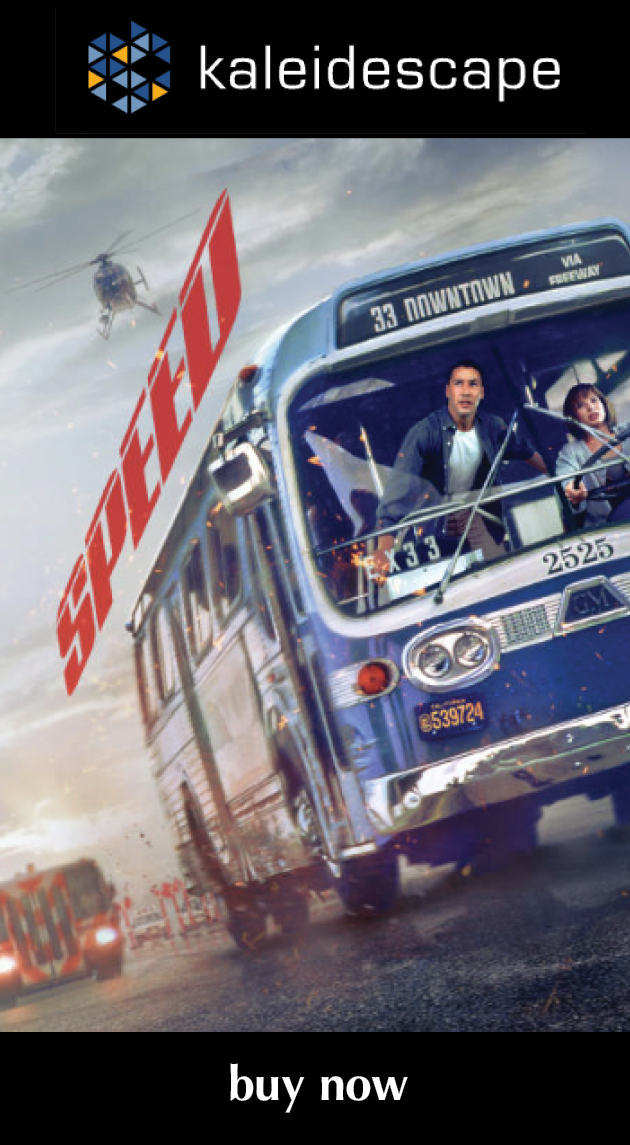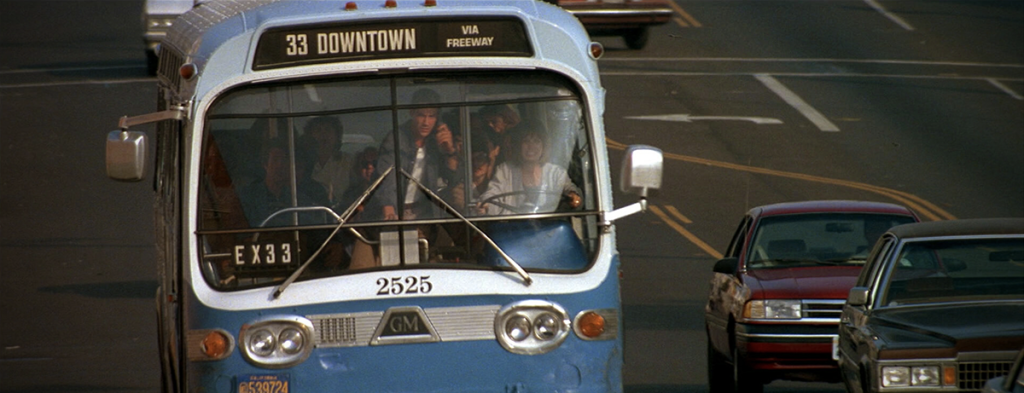
review | Speed
Jan de Bont’s Die-Hard-on-wheels still holds up as a solid actioner after almost 30 years
by John Sciacca
May 5, 2021
There are two movies I can say literally changed my life without any hyperbole. The first was Speed. (The second was Heat, but that story will have to wait for another day, and another review . . .) In 1994, my friend Travis’s dad purchased a modest home theater system from a big-box store. As I recall, it was a JBL package actually comprised of two systems—one called Music that included two speakers and a subwoofer, and one called Movies that included a center channel and rear speakers. Once the system was installed, Travis invited me and another friend, Pierre, over to see a movie. Pierre’s dad happened to own a LaserDisc player and had just purchased Speed on LaserDisc, so that seemed like the perfect actioner for three guys to watch.
While I’d certainly seen the Dolby Surround logo plastered on TV shows at the time touting the new-ish home technology (I remember it being prominently displayed during The Simpsons intro), I had never actually experienced a home surround system of any kind. And even though it was “just” four-channel Dolby Pro-Logic, I was blown away. From the opening moments of the film, hearing the elevator cables snap and spring behind me with sounds spread across the front of the room and explosions that seemed to have real depth, I couldn’t believe you could actually have a movie-like surround experience in your own home. I was enthralled with the movie and couldn’t believe how much the audio elevated it.
I left Travis’s house a total home theater convert, knowing I needed something like that of my own. This set me on a journey down the rabbit hole of researching all the different technologies then available (this was right on the cusp of Dolby Digital—or AC-3, as it was known then—being launched on the home market), that ultimately led me to determine I no longer wanted to continue my career as a golf professional but wanted to become a custom installer and install systems like this for a living. Pretty powerful for a movie that doesn’t even last two hours that I watched heavily letterboxed on a 32-inch tube TV!
As you can imagine, I have a pretty big soft spot in my heart for Speed, so I was thrilled when I saw that 20th Century Fox was giving it a new 4K UltraHD transfer with HDR grading. Was I mildly disappointed that they chose not to do a new Dolby Atmos immersive audio mix for the movie, rather than stick with the same 5.1-channel DTS-HD Master Audio that was used on the original Blu-ray? Sure. But I was really impressed with how dynamic and aggressive this mix was, especially when run through a modern theater processor utilizing an upmixer like Dolby Surround or DTS-Neural.
Any time you revisit a beloved film years later, it’s always a bit of a concern that things won’t hold up. Will the effects be dated and unbelievable? Will dialogue be cheesy? Will plot points that were credible 20-plus years ago now have gaping holes in them? Happily, Speed still totally holds up, being just as entertaining and engaging now as ever.
At the time, Keanu Reeves’ career was certainly on the rise, following major roles in Bill & Ted’s, Point Break, and Dracula. But he wasn’t the action hero we know today from the Matrix and John Wick films, and his role as dauntless SWAT officer Jack Traven definitely had audiences looking at him in a new light that didn’t include any surfer-dude lingo. Even less known was Sandra Bullock, and it’s safe to say her role as sudden hero Annie in Speed turbocharged her career. (Though she does seem remarkably bubbly and cute for someone thrust into the situation of driving a bus to keep people alive that could be blown up at literally any second . . .) The film is also anchored by solid performances from Dennis Hopper as baddie Howard Payne, Joe Morton as police Captain McMahon, and Jeff Daniels as Keanu’s partner, Harry. This is also the directorial debut of Jan de Bont, though he had cut his chops as cinematographer on action films like Die Hard, Black Rain, The Hunt for Red October, and Lethal Weapon 3, where he developed an eye for pacing and framing.
While it has been called Die Hard-on-a-bus due to its near relentless action, Traven having to overcome one formidable hurdle after another, and Payne always anticipating one step ahead (and, of course, de Bont’s association with Die Hard), the film is different in that it takes its time to get to know the characters around the action, making you more involved in the story. It also jumps straight into the story and action, with none of the lengthy build-up found in Die Hard.
After officer Traven and his partner Harry foil a bomber’s attempt at ransoming hostages trapped in an elevator, Payne detonates a bomb on a city bus to get Traven’s attention. He then informs Traven that he has planted another bomb on a different bus that will explode if the bus slows below 50 MPH—or if anyone attempts to leave the bus. Traven must find a way to keep the bus’s speed above 50 MPH in LA traffic until Payne can work out his ransom demands of $3.7 million from the city, all while Harry attempts to uncover and track down the bomber.
Originally filmed in 35mm, this transfer is taken from a new 4K digital intermediate. While there is a bit of grain visible in some of the outdoor sky scenes or bright lights, it was never objectionable. Images are mostly clean and detailed, retaining a film-like look without having detail scrubbed away or looking soft. I did notice that some shots—such as early scenes inside the elevator car—have some focus or softness issues, but this is likely due to the original production.
While you can’t expect the tack-sharp look of a modern digital production, what you do notice is the clarity and sharpness throughout, especially during closeups. There are scenes that cut between Payne watching TV broadcasts and closeups of him, and the difference in resolution and detail is startling. Later scenes where they are on the bus at the airport look especially terrific. Beyond revealing all of the lines, wrinkles, and whiskers in actors’ faces, you see detail like the winding in the strands of the elevator cabling, the sheen and texture of metal, and the fabric detail. One early scene of Harry is so sharp, you can clearly make out the different texture in the fake sweat used on his face. Longer shots—such as aerial shots when the camera pulls way back to reveal the bus amidst freeway traffic—also don’t have the overall sharp focus of modern cameras, but still look far better than any of the prior releases.
The wider color gamut helps things like explosions to really pop with bright red-orange fireballs. We also get some vivid color from red traffic safety cones, orange-white road signs, and yellow painting in the subway. Black levels are sufficiently deep and clean, with a couple of scenes showing police uniforms that actually appeared a bit too dark, not revealing any detail. Bright lighting like fluorescents in the elevator shaft and in the subway have a lot of pop. Overall, color and images look very natural.
While Speed didn’t receive a new sound mix, it is surprisingly effective and aggressive, especially when played through a modern AV processor. The opening scene that captured my attention on first viewing all those years ago is still audibly dynamic, now with the twang and tension of elevator cables happening overhead as well as behind, giving much greater sense of height to the space. The sound designers really leaned into every opportunity to create an exciting mix, with the sounds of the bus smashing into objects off to the side, water from smashed barrels splashing up overhead, traffic and siren sounds all around, or falling debris from explosions. Helicopters pass around the room and up overhead, and the subway finale has lots of sounds streaking up the sides of the room as well as atmospherics up on the ceiling.
Bass can be deep and dynamic when called on, such as the elevator smashing into the lobby, or a variety of explosions. Dialogue is anchored to the center channel, and remains clear and intelligible throughout.
With most of the film’s visual effects being practical, they definitely still hold up. And, yes, that includes the bus jump and the fact that they did actually blow up that plane. (The subway scene at the finale shows its age a bit, and with the enhanced resolution the model work is more noticeable.) Speed remains a ton of fun to watch, and if you haven’t seen it—or just haven’t watched in a while—this new 4K HDR transfer looks and sounds terrific and makes for a great night at the movies!
Probably the most experienced writer on custom installation in the industry, John Sciacca is co-owner of Custom Theater & Audio in Murrells Inlet, South Carolina, & is known for his writing for such publications as Residential Systems and Sound & Vision. Follow him on Twitter at @SciaccaTweets and at johnsciacca.com.
© 2025 Cineluxe LLC


